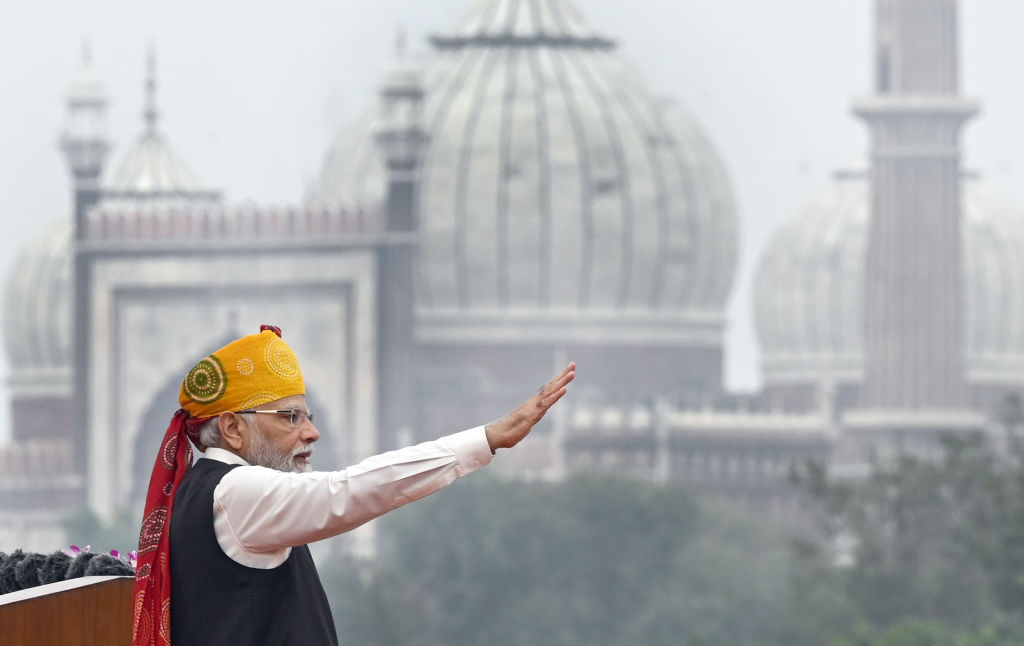
China’s sharp economic slowdown has raised alarm bells around the world. But it has also thrown into relief the rise of another demographic powerhouse next door. The Indian economy grew at an impressive 7.8% annual rate in the second quarter of 2023, and the country recently reached an important milestone by becoming the first to land a spacecraft on the moon’s potentially water-rich south pole. And, India’s ascent, unlike China’s, hasn’t been accompanied by an increasingly assertive foreign policy or an appetite for other countries’ territory.
As India’s geopolitical, economic and cultural clout grows, so does its global footprint. China’s ‘decline’, as some have begun to call the conclusion of the country’s four-decade-long economic boom, opens new opportunities for the Indian economy and other developing and emerging countries.
Earlier this year, India reached another milestone when its population officially surpassed that of China, which had been the world’s most populous country for more than 300 years. While China’s shrinking, rapidly ageing population is likely to impede economic growth and may curtail Beijing’s geopolitical ambitions, India—one of the world’s youngest countries, with a median age of 28.2—is poised to reap a huge demographic dividend.
But the driving force behind India’s emergence as a major global power is its rapid economic growth. While India’s GDP is still smaller than China’s, the country is the world’s fastest-growing major economy and is projected to account for 12.9% of global growth over the next five years, surpassing the United States’ 11.3% share.
In addition to fuelling a consumption boom, India’s youthful population is also driving innovation, as evidenced by the country’s world-class information economy and its recent moon landing, which the country managed to achieve despite a national space budget equivalent to roughly 6% of what the US spends on space missions. Having already surpassed the United Kingdom, its former colonial ruler, India is poised to overtake Japan and Germany to become the world’s third-largest economy by 2030, behind the US and China.
Given its increasingly unstable neighbourhood, it should come as no surprise that India has the world’s third-largest defence budget. The deepening strategic alliance between China and Pakistan underscores India’s precarious position as the only country bordering two nuclear-armed revisionist states with expansionist ambitions. For the past three years, India has been locked in a tense military standoff with China along its Himalayan border. Bilateral relations, marked by intermittent clashes in the disputed Tibet–Ladakh border region, are at their lowest point in decades.
By confronting China despite the risk of a full-scale war, India has challenged Chinese power in a way no other country has done in this century. But despite leaning towards forging closer ties with the West, India remains hesitant to enter into formal military alliances with Western countries.
Western powers are partly to blame. US President Joe Biden’s reluctance to comment on the Sino-Indian military standoff, let alone openly support India, has sent a clear signal that India is responsible for its own defence. Given that the country’s future growth hinges on its ability to defend itself against external threats, India will likely step up its efforts to modernise its conventional armed forces and enhance its nuclear deterrence.
The escalating geopolitical rivalry between China and India could also impede efforts to unite the global south and transform the BRICS group into a credible alternative to the G20 and G7. The BRICS countries (Brazil, Russia, India, China and South Africa) recently agreed to expand the group by adding six new members: Saudi Arabia, the United Arab Emirates, Egypt, Ethiopia, Argentina and Iran. Given the 11 members’ divergent interests, BRICS+ will likely find it even harder to reach consensus on any major issue.
Meanwhile, China’s economic slump could prompt President Xi Jinping to double down on his expansionist agenda. Biden recently characterised the stagnating Chinese economy as a ‘ticking time bomb’, warning that, ‘When bad folks have problems, they do bad things.’ China’s controversial new national map, which depicts vast areas of India, Malaysia, the Philippines, Vietnam, Taiwan and Bhutan (and even a bit of Russia) as Chinese territory, underscores the threat posed by Beijng’s increasingly aggressive behaviour.
In addition to these external threats, India’s future will be shaped by its response to domestic economic challenges. Prime Minister Narendra Modi has made great strides in modernising the notoriously outdated Indian bureaucracy and promoting e-government to reduce red tape and attract foreign direct investment. His government has invested heavily in upgrading and expanding the country’s infrastructure, implemented regulatory reforms and sought to boost domestic manufacturing through the ‘Make in India’ initiative. But to transform itself into a global manufacturing hub, India must invest in human capital, particularly in education and training.
India’s size and diversity also pose enormous challenges. India may be the first developing economy that, from the beginning, has pursued modernisation and prosperity through a democratic system. But as one of the world’s most culturally diverse countries, its seemingly never-ending election cycle has often fuelled division and polarisation.
But, despite its US-style polarised politics, India’s democratic framework has served as a pillar of stability. By fostering open expression and dialogue, the Indian political system has empowered grassroots communities and individuals, enabling members of historically marginalised classes and castes to rise to the highest levels of policymaking.
Whether India can maintain its upward trajectory will depend on its ability to maintain political stability, rapid economic growth, domestic and external security, and a forward-looking foreign policy. Success would enhance India’s global standing and help advance US interests in the Indo-Pacific, the world’s new geopolitical fulcrum and home to its fastest-growing economies.

